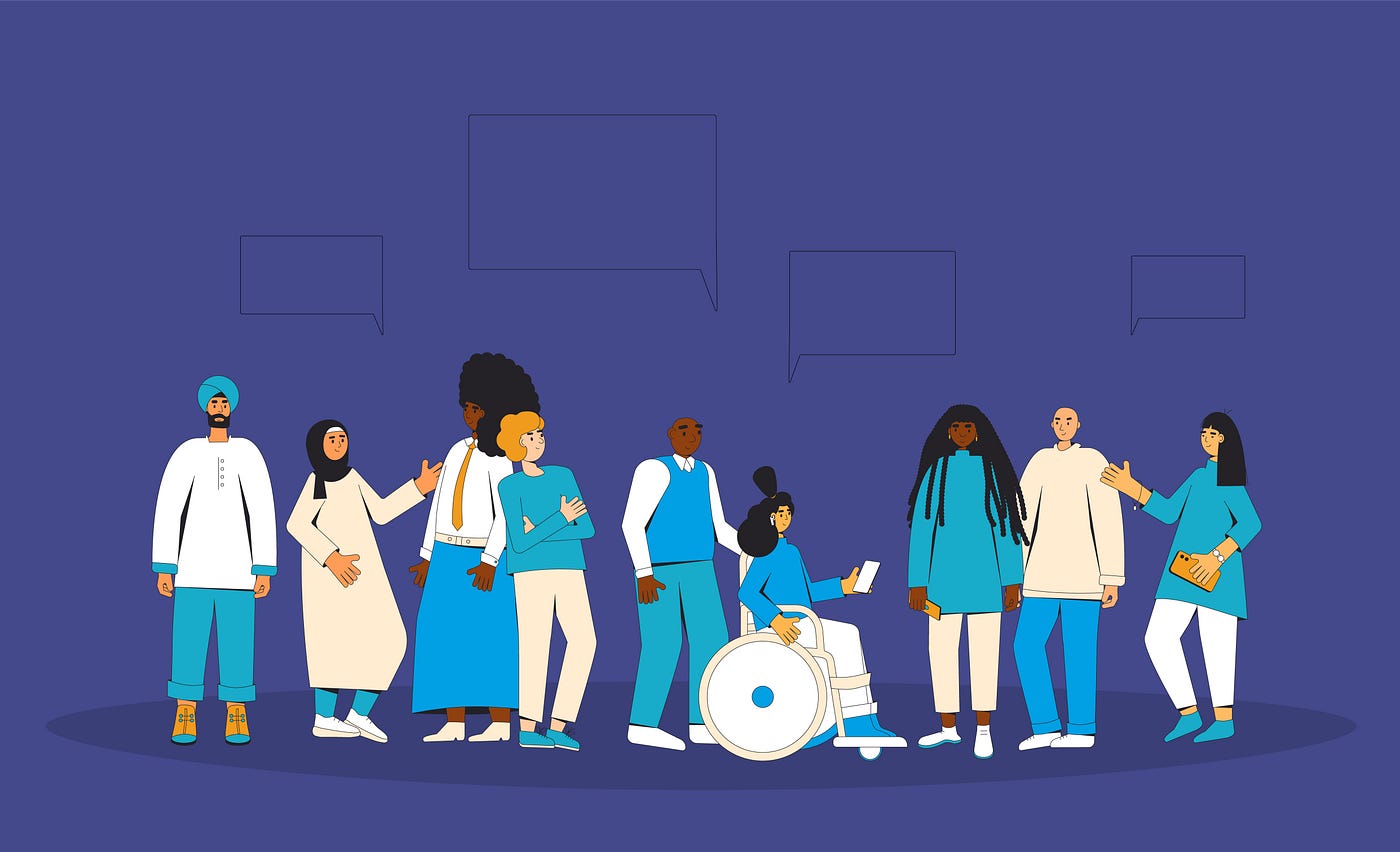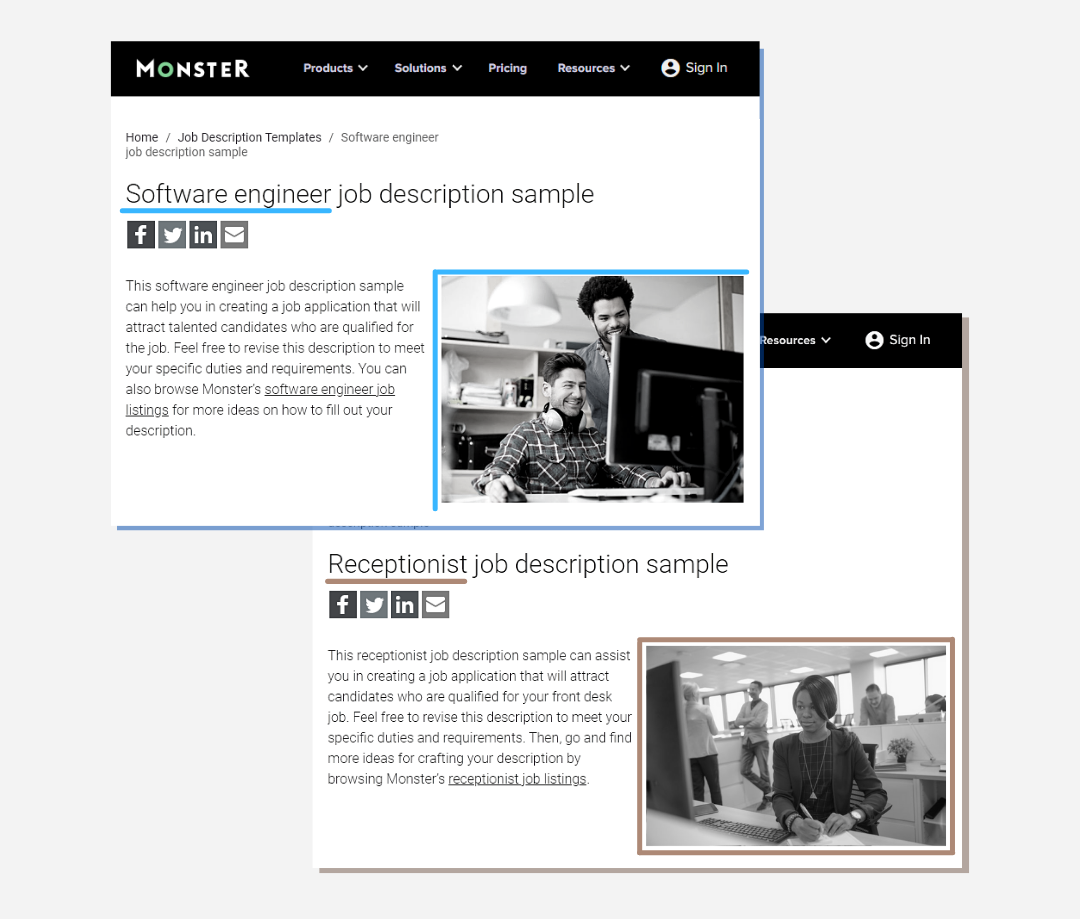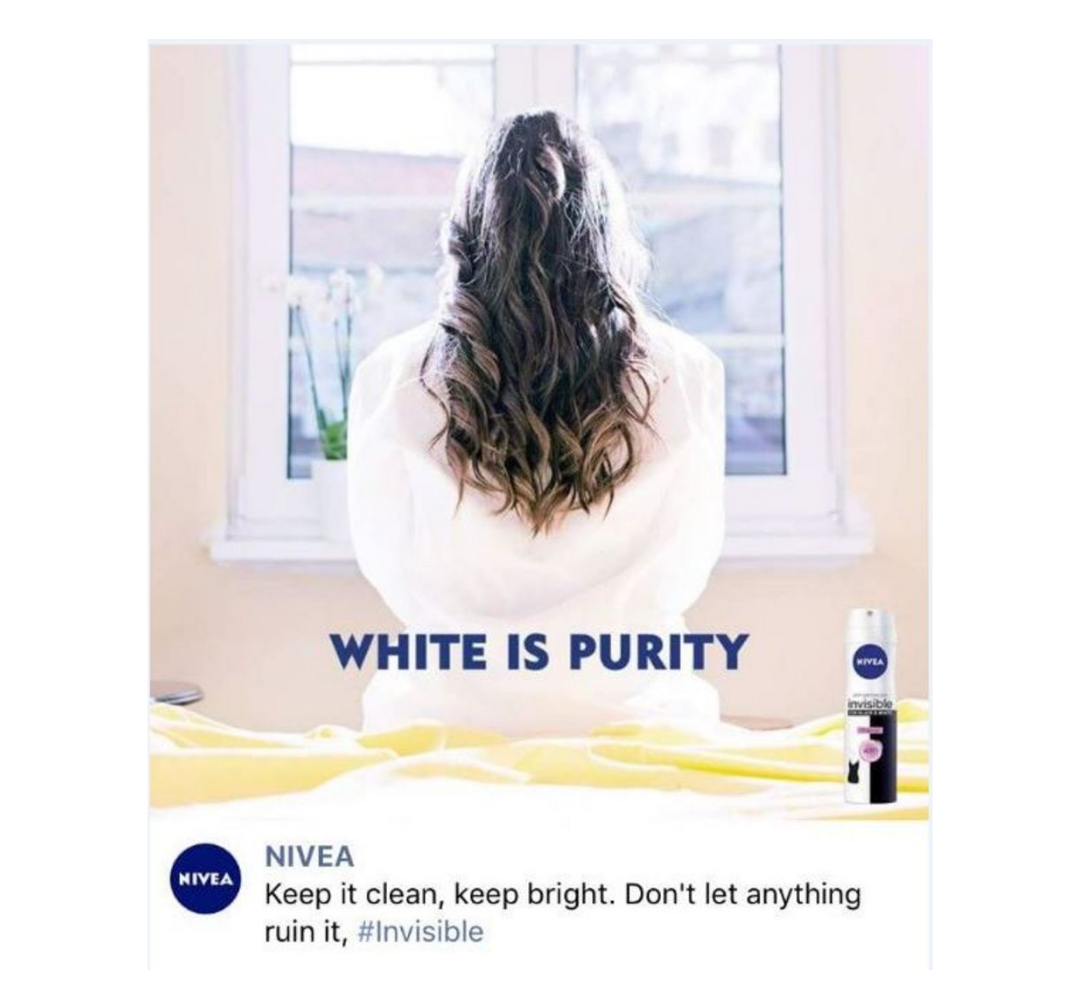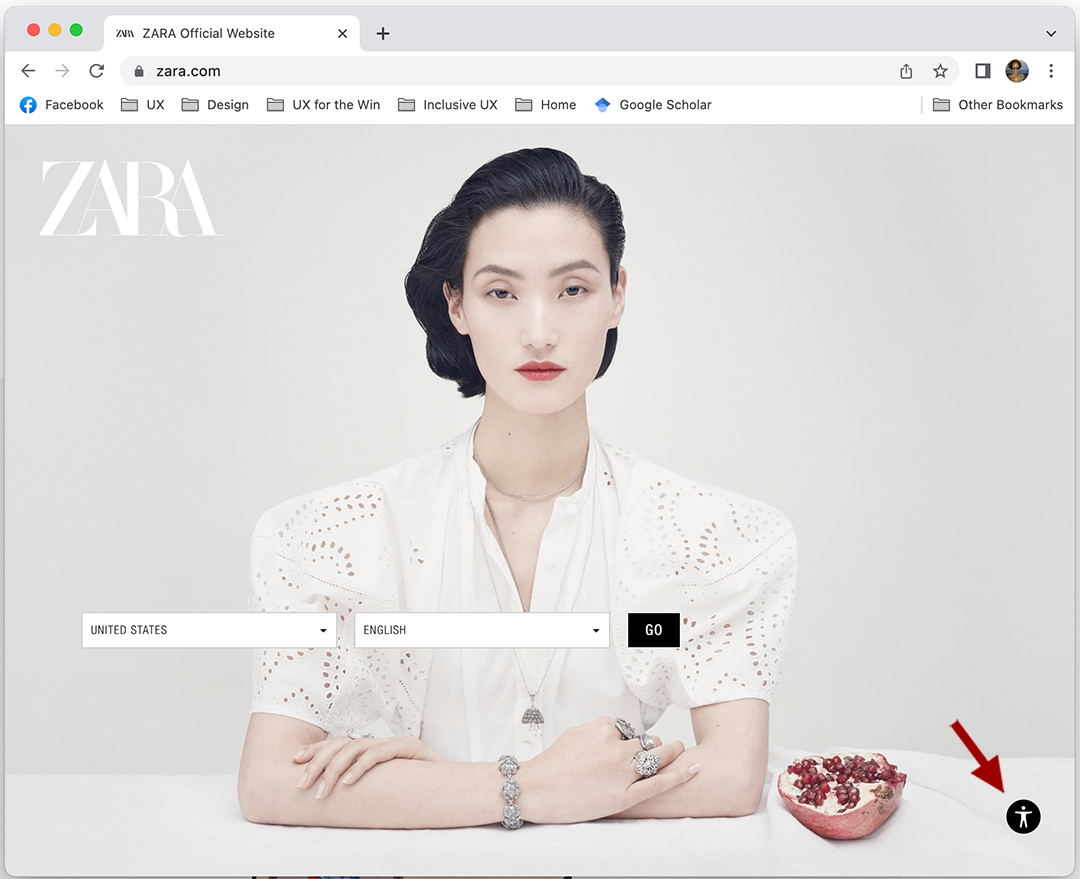

A beginner’s guide to inclusive UX design
source link: https://uxdesign.cc/a-beginners-guide-to-inclusive-ux-design-b8dcc94f5068
Go to the source link to view the article. You can view the picture content, updated content and better typesetting reading experience. If the link is broken, please click the button below to view the snapshot at that time.

A beginner’s guide to inclusive UX design
What it is, why it matters and lots of resources

Photo by Aleks, Adobe Stock
With the Internet, and the emerging metaverse, anyone can produce content and products that instantly have global reach. With that power comes responsibility to ensure products are inclusive and respectful of their global audience‘s diverse social identities.
People approach products and technology believing that a team of experts have implemented checks and balances to ensure the product was designed with them in mind. People expect to have experiences that have taken into account their product-relevant social identities — their disability, race, gender, skin color, age, size, language.
UX, accessibility, inclusion, oh my!
UX design is research-based with the goal of creating optimal user experiences. Historically, UX pioneers and thought leaders have not emphasized designing for a diverse range of user identities. So, UX design is often taught with little-to-no mention of inclusive design practices.
Accessible UX design minimizes barriers so that content and features can be accessed and used regardless of one’s permanent, situational or temporary disabilities in the areas: hearing, motor, vision, speech, and cognition. Since disability is only one aspect of identity, accessibility is one aspect of inclusive design.
Inclusive UX design minimizes alienation of any product-relevant social identity: disability, race/ethnicity, gender, skin color, age, size, sexual orientation, language, etc. Inclusive design commits to due diligence to ensure designs respect the needs and expectations of the diverse range of users the product serves.
Why inclusion matters
When a design doesn’t account for a diverse audience, overlooked groups will encounter an alienating experience. Here are just a few examples:
Gender stereotyping

Screenshots of sample software engineer and receptionist job descriptions on Monster.com
The imagery used in marketing and advertisements is often the start of the users’ experience with a company or product. Showing two males for a software engineer job and a woman for a receptionist job reinforces societal stereotypes of gender roles.
Racial insensitivity

Screenshot of Nivea’s ad for their “Invisible” deodorant
This ad for deodorant with a White woman sitting on a bed in a white robe and text reading, “White is purity. Keep it clean. Keep it bright. Don’t let anything ruin it” screams racial bigotry. Colorism and racial oppression are known problems, worldwide, so there’s truly no justification for this type of design negligence.
Accessibility barriers

Screenshot of Zara.com homepage with accessibility overlay icon
When accessibility is an afterthought, businesses often resort to using accessibility overlays as a fallback plan. That little accessibility button in the bottom-right corner, it’s an accessibility overlay — a third-party tool that is supposed to improve accessibility. While it’s a noble attempt, a quick Internet search for “accessibility overlays” reveals how they are “deceptive,” “problematic,” and “can make access worse.”
Corporate cultural appropriation

Walmart’s Celebration Edition ice cream: Pride and Juneteenth (Photo by Laine Doss)
Companies sometimes try to present themselves as being inclusive by designing products to celebrate diverse identities. Walmart’s Celebration Edition ice cream is a perfect example of this anti-pattern. They released a Juneteenth flavor to “Share and celebrate African-American culture, emancipation and enduring hope” and a Pride flavor as “A sweet celebration of pride and the freedom to enjoy together.” This is what happens when companies commercialize cultures and design for, and not with, the people whom they are trying to reach.
If you’re designing a product, ensure it’s at least tested… and considered in the context of someone as different from you as possible.
— Florence Okoye
Inclusive UX Design Resources
As UX professionals, our design choices can inspire, motivate, connect, empower, and support goal achievement. They can also alienate, offend, marginalize, misrepresent, and create barriers, which obviously is not a good user experience.
It’s long overdue for UX thought leaders to normalize inclusive design as foundational to UX work instead of the occasional mention of it as a niche topic.
Since most UX education, industry leaders, and content creators tend to overlook inclusive design, here’s a list of resources for learning how to design inclusive experiences. If you know of any other good inclusive ux resources, let me know in the comments as I will be periodically adding to this list.
Questions to ask ourselves
- Does this reflect input from people who will use the design?
- Does this provide a welcoming experience to all it will reach?
- Is this void of cultural appropriation?
- Does this adapt for different context of use and environments?
- Does this allow people to personalize their experience for their needs?
- Does this help people achieve their goals efficiently, regardless of their ability?
- Does this build trust?
- Are we designing with, not for?
- Does this respect and make room for diverse identities?
- Who are we excluding?
- What outcome are we hoping to achieve?
Recommend
-
 7
7
Is color theory getting you down? Are you tired of the same old preset palettes? Sick of hitting “regenerate” on a magical color palette creator? Don’t worry, we’ve all been there… This post hopes to be your virtual guide up the...
-
 12
12
Beginner’s Guide to Design Patterns in DAML Reading Time: 6 minutes DAML is an open-source language used to write distribu...
-
 7
7
The Beginner’s Guide to User Flow in UX Design | 2022The user flow in UX design is essential for creating a great UX design that can straighten out the user’s path, what problems they may meet, how to fix, w...
-
 9
9
A beginner’s guide to Design TokensHeard people talking about “Design tokens” but don’t really know what they are, or how to use them? You’re in the right place.
-
 9
9
Social Media Graphic Design Tips and Tricks for Beginners 27 Oct 2022 6 min read ...
-
 11
11
sourc...
-
 1
1
Writing for Everyone: A Beginner’s Guide to Inclusive UX WritingTips and Strategies for Creating Inclusive UX Copy
-
 5
5
UI Design for Developers – Beginner’s Guide and Tips
-
 3
3
“Embarking on the UX Design Journey: A Beginner’s Guide from a Relatable Perspective”Are you intrigued by the world of UX design but feel lost when it comes to taking that first step? Feeling overwhelmed is...
-
 7
7
Design Systems: A Beginner’s GuidePublished inUX Plane...
About Joyk
Aggregate valuable and interesting links.
Joyk means Joy of geeK